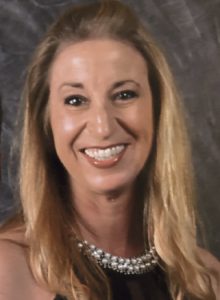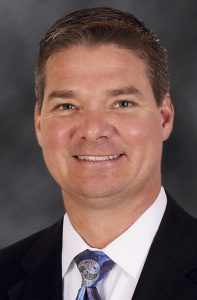ACCIDENT INSURANCE TRENDS
Agents and brokers need to communicate changes with their clients
By Len Strazewski
The policies used to read like a laundry list. Break a leg, receive a specified payment. Lose an eye, another specified payment. Admitted to a hospital, cash payments supplement major medical insurance.
That’s the way it used to be, before rising healthcare costs, high-deductible health plans and the COVID-19 global pandemic. Confronting these industry trends and events, insurers are changing policy terms, benefits, and product marketing—and they’re relying on agents and brokers to communicate the new value.
“Life [and] People are changing. The way they live is changing,” says Kim Rudeen, vice president of product development and product management at Aflac.

“Accident insurance is sold, not bought. Agents and brokers need to communicate the value of the product and it is critical for us to provide them with the right informational materials to do that.”
—Kim Rudeen
Vice President, Product Development and Product Management
Aflac
The result has been fewer traditional accidents, she says. “People are staying home and that has resulted in a generally downward trend in number and type of accidents.”
However, COVID has caused crowded hospitals and concern that seeking care in the usual medical setting may expose individuals to COVID infection. “People have had a hard time getting care and in general, have avoided seeking care in usual settings during the pandemic,” she says.
This crisis of access couldn’t come at a worse time. Claims history indicates that Millennials are accident prone, with athletic or exercise-related accidents being reported by a high percentage, especially those participating in organized athletic events which in the past would either not be covered or not reported.
Aflac and other accident insurers responded with a change in policy definitions designed to make filing claims and getting care under the policy benefits easier. But they also have included more coverage for testing, screening, and wellness.
“We wanted to make sure we are helping our customers and focus on their wellness, not just making payments for the results of specific categories of accidents,” Rudeen says. “The key question is how do we protect customers from the burden of medical costs, mental health treatment costs and financial losses—the economics of job loss.”
Michael Naumann, voluntary benefits practice leader at Reliance Standard, agrees. Coverage is getting broader and richer, he notes, and premiums may also reflect these enhancements.
“Individuals over 70 used to be restricted from accident insurance, but people are living longer and working longer and are continuing to be active in their senior years.”
—Michael Naumann
Voluntary Benefits Practice Leader
Reliance Standard
Post-traumatic stress is now covered under some policies, especially in conjunction with auto accidents and other recognized causes and, as the pandemic has expanded, accident insurers have begun to include payment for testing and immunization as part of a broader wellness benefit. Other kinds of screening have been added to some products, including genetic testing, hearing testing, and dental and eye exams. Chiropractic also is covered more often.
Age and other restrictions are also disappearing. “Individuals over 70 used to be restricted from accident insurance, but people are living longer and working longer and are continuing to be active in their senior years,” Naumann says.
“Geographical restrictions are also disappearing. Coverage used to be limited to the United States and its territories but that is changing, driven by producers in the border states, international work assignments and adventure travel,” he says.
As employers encourage employees to use urgent care facilities and telehealth, accident insurers are broadening coverage for these resources, too, he says. Amateur sports injuries have always been covered, but some insurers are adding a bonus for accidents in organized sports that provide protection and treatment faster.
A growing, evolving benefit
Accident insurance is also part of a broader, growing and rapidly evolving voluntary benefits environment, according to recent research from LIMRA, an industry research organization in Windsor, Connecticut. New annualized premium for workplace life insurance, disability insurance and supplemental health products increased significantly in the third quarter of 2021, according to LIMRA’s workplace benefits sales surveys.
Workplace benefits sales surveys for life insurance, disability insurance and supplemental health represent at least 90% of their respective annualized premium markets, the research indicates.
“After the disappointing results in 2020, workplace benefits sales have rebounded in 2021,” said Patrick Leary, corporate vice president and director of LIMRA’s workplace benefits research program, introducing the study results. “In a very competitive job market, employers recognize the need to offer a robust benefits package to attract and retain the best talent. Our research suggests non-medical benefits to rise at least 20% over the next five years.”
Total workplace supplemental health insurance premium totaled $4.4 million in the third quarter, up 16% from third quarter of 2020. Year to date, supplemental health new premium was $1.9 billion, a 4% increase from the same period in 2020.
LIMRA said all supplemental health product lines recorded positive growth in premium in the third quarter: Accident insurance increased 18%, critical illness rose 6%, cancer insurance grew 9%, hospital indemnity jumped 25% and other supplemental health benefits increased 33%.
“For the self-employed, occupational accident insurance should be the cornerstone of all voluntary benefits. It is not covered within other options and is key to future viability in the event of a serious injury.”
—Al Hardin
Managing Director
CPro Associates
Accident insurance has grown as an alternative to workers compensation for uncovered part-time or contract workers. While most employees are covered under state mandated workers compensation insurance, few contract or “gig” workers are covered.
Al Hardin, managing director of CPro Associates, a division of One80 Intermediaries, adds that occupational disease had never previously been covered under accident insurance policies. In most cases, rather than restrict coverage, many policies have added options like benefits for survivors and exposure and disappearance benefits.
“Many agents provide excellent coverage for the employers and employees, yet coverage for contractors is often overlooked,” Hardin says. The biggest example is the rapidly growing gig economy, he continues. “In addition to the well-recognized brands such as Uber, Door Dash and TaskRabbit, there is a significant number of smaller competitors that continue to expand.”
More specialties are beginning to participate in the gig economy ranging from doctors and nurses to dog walkers. Employers need to provide access to some benefits to attract those workers. However, there are some administrative burdens.
“In order to boost sales and manage enrollment, platforms will need to provide sufficient contractor records and employment dates,” he says.
The evolution of benefits for gig workers began in the early 2000s, when the transportation industry sought coverage for owner-operators throughout most of the United States that were exempt from state-mandated workers compensation.
The initial policies provided small limits with limited duration, Hardin says. As these policies have become more common, limits have increased as has coverage including contingent liability and some non-occupational accidents.
“For the self-employed, occupational accident insurance should be the corner-stone of all voluntary benefits. It is not covered within other options and is key to future viability in the event of a serious injury,” he says.
Reaching clients
Accident insurance marketing has also evolved as insurers have introduced new ways that their agents and brokers can reach out to potential customers. Prospects are no longer clustered in their workplaces, waiting for the time when they enroll in employer-paid benefits.
They are working from home, dealing with the distractions of maintaining a home office, providing childcare and keeping a steady stream of communications with superiors, colleagues, and customers. Slowly, as the COVID cases ease, workers are returning to offices, but not always for a full work week.
“[E]mployers recognize the need to offer a robust benefits package to attract and retain the best talent.
Our research suggests non-medical benefits to rise at least 20% over the next five years.”
—Patrick Leary
Corporate Vice President and Director, Workplace Benefits Research Program
LIMRA
Communications remain primarily digital, audio, video and solo, with group meetings in an office a relic, insurers say. But communicating the value of supplemental accident insurance is essential. As customers move away from centers of employment and into more diverse employment, insurers must diversify their outreach, according to Hardin.
“Accident insurance is sold, not bought,” Rudeen adds. “Agents and brokers need to communicate the value of the product and it is critical for us to provide them with the right informational materials to do that.”
The insurer provides a wide range of communications: videos, online interactive materials and websites. Call centers are still important, Rudeen says, and insurers need to maintain ways that customers can reach out and talk to a person who can answer questions and process enrollments. Not everyone enjoys entering their information on a keyboard.
Written communication—flyers, tipsheets, screen texts and other more traditional sources—is important. “People learn in different ways,” Rudeen says. “We need to meet people where they are.”
Timing and positioning also play a role, says Naumann. “Agents and brokers need to keep to a well-defined communications strategy, and maintain a flow of information from pre-enrollment, year-round, and through post-enrollment. Accident insurance is easy to explain, but it is getting more complicated as it evolves.”
Naumann recommends agents and brokers position their accident insurance and other voluntary product presentations after discussion of employer-paid benefits to illustrate how these benefits support each other.
Agents and brokers also need to be able to communicate how accident insurance fits with other voluntary insurance products. Customers often combine accident insurance with critical illness insurance, Naumann says. And as the pandemic expanded, hospital indemnity insurance became a more popular product.
“Insurers are seeing significant income growth in hospital indemnity insurance, which provides faster payment as medical insurers move through their usual major medical claims process,” he says.
For more information:
Aflac
www.aflac.com
CPro Associate
www.cproassociates.com
LIMRA
www.limra.com
Reliance Standard
www.reliancestandard.com
The author
Len Strazewski is a Chicago-based writer, editor and educator specializing in marketing, management and technology topics. In addition to contributing to Rough Notes, he has written on insurance for Business Insurance, Risk & Insurance, the Chicago Tribune and Human Resource Executive, among other publications.







